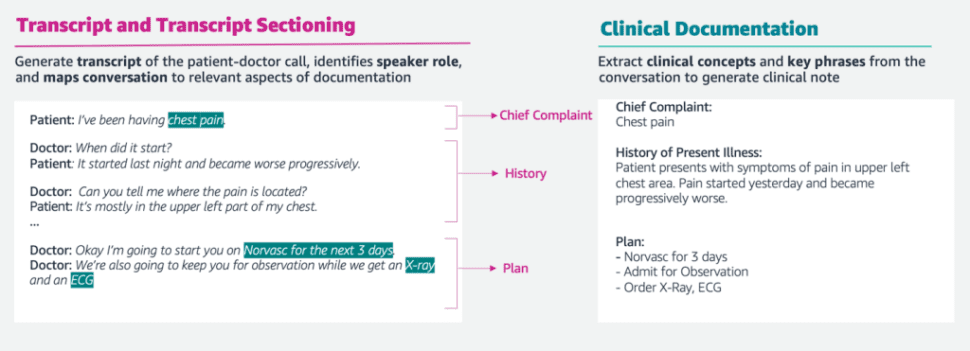Very large health care systems and academic medical centers can employ programmers to create their own LLMs, according to David Kereiakes, managing partner at Windham Venture Partners. In addition to patient data, they ingest organizational data such as how frequently a provider sees patients, the number of procedures performed, etc. Some of these providers also partner with large tech companies.
He says that these providers refuse to share data to create larger data sets because of the proprietary value of that data (with privacy concerns playing a minor role). He also says that organizations have invested a lot in cleaning up their data, sometimes putting their clinicians to work to upgrade its quality.
But what about small providers, rural providers, and front-line facilities? Where will they get the resources to derive the critical efficiency improvements that generative AI can offer them?
Democratizing Generative AI
Sarah Nagy, founder and CEO of Seek AI, says that small providers don’t have to “rebuild the wheel.” Vendors can offer them turn-key LLM solutions that they interact with either through their web browsers (a very convenient option for those lacking trained programmers), or, through an API as suggested by Jean-Claude Saghbini, President of the Lumeris Value-Based Care Enablement business.@Wolters_Kluwer
Dr. Rowland Illing, chief medical officer and director of global healthcare and non-profits at Amazon Web Services (AWS), says they are “democratizing access to the same leading technology and services that large enterprises are using. With AWS, healthcare organizations that don’t want to build their own models have several options (along with independent vendors); They can employ pre-trained base models that they privately customize (e.g., with Amazon Bedrock). They can also use solutions with built-in generative AI that don’t require any specific expertise in machine learning (e.g., AWS HealthScribe).” In Figure 1, AWS HealthScribe identified key elements of a patient-doctor call.

Illing also says, “Fine-tuning existing, pre-trained models is substantially faster, and requires less computation time and data, than creating a task-specific ML model from scratch to get industry-specific responses from the application.” He calls this option “the Swiss army knife of AI” and mentions Amazon Q (in preview) as well as Amazon Bedrock as examples.
Illing says, “High-quality LLMs are pre-trained on a vast amount of unstructured data. This prepares them to solve problems from different contexts. And the size of their parameters allows them to automate more complex tasks than traditional AI models do. With very little data of your own, you’re able to customize a large model to your specific use case and achieve high accuracy.” AWS provides several services in this area too.
Vignesh Ravikumar, partner at Sierra Ventures, predicts that EHRs, along with cloud vendors, will incorporate generative AI into their platforms. Moreover, third-party vendors will make it easier to integrate generative AI into popular platforms. Moreover, “Some models will get really good at specific domains of tasks. This ultimately means that they will be able to provide a high-quality service at a low cost, which should help these clinics adopt new services.”
Melvin Lai, senior associate at Silicon Foundry, expects “customized, less resource intensive, models for small community clinics to emerge.” He writes to me that gathering data, building the foundational model, and customizing the final model for small health care providers could all be done by different vendors. “Big tech will try to control as much of the value chain as possible and provide end-to-end solutions for their customers, but small clinics looking for genAI solutions might be better served by emerging tech companies that specialize in small clinical use cases and can customize the general models for their specific applications.”
Alex Tyrrell, senior vice president of health and advanced tech at Wolters Kluwer, points to the use of plugins to make development easier and improve software quality.
The Greatest Promise of Generative AI
This generative AI series has examined the many ways in which generative AI has been used in health care, and some of the new use cases that may soon be feasible.
Just for fun, I loaded several hundred words of my notes for this article into ChatGPT and asked it to write an essay about generative AI in health care. As an extra flourish, I asked ChatGPT to write in the style of journalist Tom Wolfe (the subject of a recent documentary I had just seen). To its credit, ChatGPT made a fluttering attempt at stylistic flamboyance, but results were not reckless enough to earn me enemies like Wolfe. The AI turned out a credible summary of the potential for generative AI. Notably, the output showed some rhetorical sophistication by ending with the hope of improving patient care.
And indeed, perhaps the garrulous, gluttonous ChatGPT algorithm is offering us a moral and a message. Every industry wants to streamline administration and reduce costs; health care can use generative AI for those goals as assuredly as any other field. But health care also has a mission, which sets it apart from many other industries: to heal. If generative AI in the back office contributes to that goal, the costs and disruptions of its adoption will be justified.













